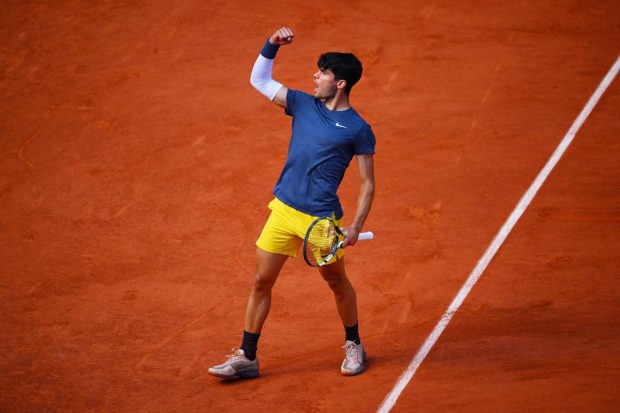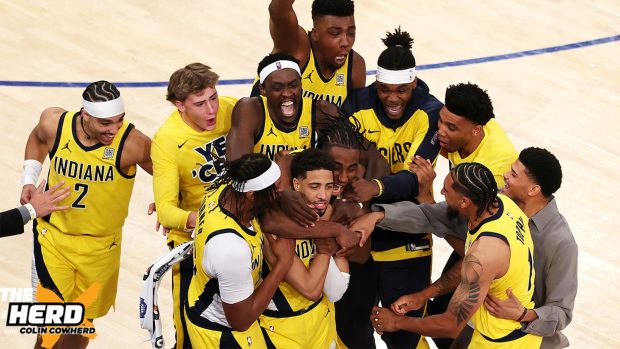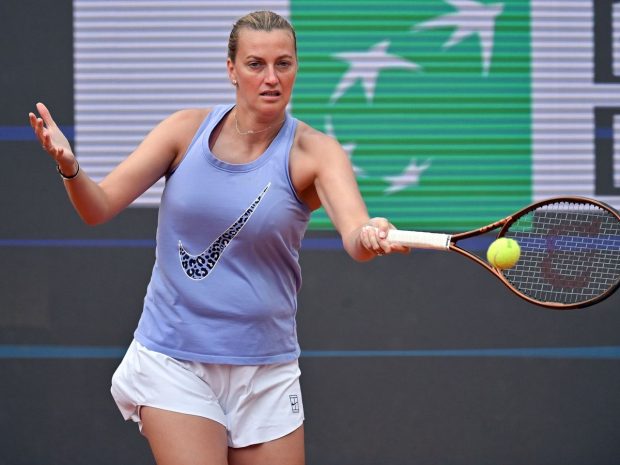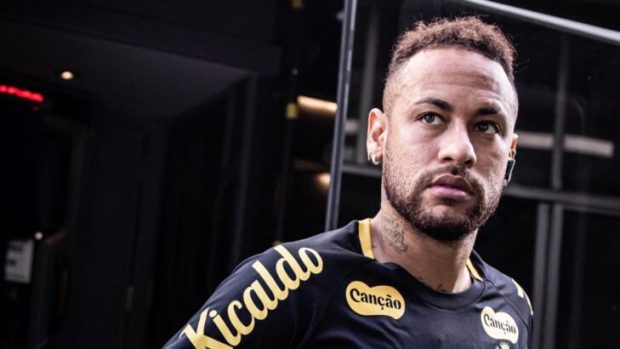The beating heart of men’s tennis in France has arrived once more, this time with that unmistakable head of hair in small braids.
Gaël Monfils, the 38-year-old savant, is ready to put on another show. For the French players and fans that descend on Roland Garros every year, that’s what tennis has been all about for some time. Winning would be nice, but it just doesn’t happen all that much for the locals.
Advertisement
No man has won his home Slam since Yannick Noah in 1983. Mary Pierce the 2000 women’s champion, is the lone French woman to win the title in the modern era of professional tennis, which began in 1968. Over the years, French tennis has seemingly become about something else.
“We always want to put on a good show, right?” Monfils said during an interview earlier this year.
Monfils has been doing that for going on 20 years. Splits in the air; leaping forehands; bullet-time overheads, suspended above the court. Enough magic to fill so many highlight reels that players, journalists and fans often engage in discussions about which collection is the best one. A 6-foot-4 inch frame and a spring in his legs that can still launch him over an umpire’s chair help with that.
These gifts helped make Monfils the urtext of what people — French and foreign tennis fans alike — have come to expect from a French male player, going back to Noah, to Henri Leconte and even Fabrice Santoro, who played with a two-handed grip on both his forehand and his backhand.
Then there’s Richard Gasquet, playing his final French Open, whose swashbuckling one-handed backhand propelled him to more Grand Slam semifinals than any other French man has managed the past thirty years. Among the women, Caroline Garcia, who has announced that this will be her last French Open too, has long played with one of the more graceful, aggressive games. Diane Parry showcases a rare one-handed backhand on the WTA Tour.
If the way people play tennis can in some ways reflect the values of a culture, then what people think about when they think about France is also what they think about when they think about French tennis, and in turn, the French Open. It’s a serious athletic competition. It’s also a stunning stylistic experience.
Advertisement
Nothing quite compares to the burnt orange shade of the terre battue, especially when the sun slants across Roland Garros. The complex features the sport’s ultimate jewellery box in Court Simonne-Mathieu, a 5,000-seat gem located at the end of a pathway through a garden and encased on its western end by a greenhouse. It’s hard not to feel the spirit lifting while gazing at 15,000 spectators at Court Philippe-Chatrier mostly clad in Panama hats, heads turning to the rhythm of the ball ping-ponging across the clay.
And then there are the actual people swinging their rackets on behalf of the bleu-blanc-rouge, and the near limitless abandon of the fans that wave their flags and chant their heroes’ names across stadiums, sometimes to the soundtrack of a brass band.
“The French players have a lot of style,” said Jim Courier, the two-time French Open champion and a tournament analyst for TNT’s television coverage this year, in a conference call this week. “There’s an artistry to it, there’s a style, there’s a flair. It’s a little less structured than maybe Spain, or a little less full-on attack-minded like in the United States.”
Not everyone buys into this concept, especially Corentin Moutet, a French artist of another sort, with all sorts of drop shots and his notorious underarm serve.
“It’s always better when people think you’re entertaining,” he said during a recent interview.
“But most important is to win matches, right? It’s not to make fun or entertain people. We are working hard since we are very young to win matches to be at the top of the game.”
Monfils has done that, and done it for longer than most. He has more Grand Slam wins than any other French men’s player, two major semifinal appearances and eight more quarterfinals. He this year reached the fourth round of the Australian Open with a storming run that included a win over world No. 4 Taylor Fritz. The substance is there.
Advertisement
Monfils does not disagree with Moutet, but he explained as only he can that playing beautiful, jaw-dropping tennis is a big part of what has always fed his hunger for the game and led him close to the top of it.
“When you don’t play with passion,” he said, “the sacrifice becomes harder.”

Gaël Monfils celebrates winning the Auckland Classic in January, which made him the oldest man to lift an ATP Tour trophy. (Phil Walter / Getty Images)
There’s a basic formula that most older players follow that helps them survive. It involves conserving energy, ending points quickly and playing a little more conservatively. Monfils is all for short points. The playing more conservatively part? Not so much.
It’s hard to argue with his approach. Monfils has battled back from injury to get back to the edge of the top 40. He started the year winning a tournament in Auckland, then made that run in Melbourne. He made the fourth round of Miami, too.
During an interview last year, he said he could not possibly have any tennis regrets.
“So many people forget where I’m from, who I am. No one knows me,” he said.
“Who I am now, I couldn’t even predict this for a second. I’m one of the luckiest people to have made it.”
“I’m just trying to live in the present,” he said in the more recent interview.
While no one will likely ever be able to repeat Monfils’ tennis acrobatics, he does seemingly have a French spiritual heir in Arthur Fils, and to some degree, Fils’ close friend Giovanni Mpetshi Perricard. He has known both players for years, especially Mpetshi Perricard, who is the same age as Monfils’ younger sister.
Both have spent hours picking Monfils’ brain about how to survive and thrive on the pro tour.
Asked earlier this year what Monfils had helped him with, Fils responded: “Everything.”
“We talk about tennis, but also how he managed his career, his longevity,” Mpetshi Perricard said of Monfils earlier this month in Rome. “I try to learn as much as I can.”
Advertisement
Monfils said Mpetshi Perricard’s 150 mph serve gets so much attention, but he sees plenty of flair and style in his forehand and his net play. As for Fils, he sees someone who can play the most dynamic version of tennis from every corner of the court, a game that is well on its way to tantalizing the country and the wider tennis world. The 20-year-old has developed match toughness to go with his incredible natural ability. He is the player who looks most likely to end the French men’s drought, whether at Roland Garros or elsewhere.
Fils said during a recent chat with journalists in Madrid that there is no shortage of benefits to the approach. A fellow professional athlete once gave him this advice, he said:
“Look good, feel good, feel good, play good, play good, they pay you good.”
He expanded on that idea Friday during his pre-tournament news conference at Roland Garros. He said he does not go onto the court putting on a show, but he knows his thrashing, flowing style can produce wild points and moments that the fans relish. He compared himself to Monfils and to Ben Shelton, another top-tier athlete and Monfils groupie.
“My way of playing, it’s a bit spectacular,” Fils said. “You can put us in the category of showman, but I’m not trying to be a showman.”
Hugu Gaston, an undersized stylist in the character of Moutet, said he developed his crafty approach with his coaches from the time he was a small child. Gaston has never gotten close to one of the biggest prizes in the sport, but he has been a French tennis folk hero for many years.
“My goal first of all is to enjoy myself on court, but also for the crowd,” he said during a news conference Friday.
“They come in the stadium to have a show from me. I try to give them a show and stay also in my match.”
So it will be for Monfils as well, in what will undoubtedly be one of his final French Opens. He’s made the semifinals once and the quarters three other times, but has not played in the second week since 2019. In the first round of the 2023 event, he produced one of the most memorable performances. He came from 0-4 down in the final set to win against Sebastian Baez of Argentina while cramping, barely able to move around a Court Philippe-Chatrier that had turned into a cauldron but flashing winners all the while.
Advertisement
It is, of course, a special tournament for him, but not for the reason people might think. His parents separated when he was much younger, but they come together to watch him at Roland Garros. He has his own child now, with Elina Svitolina, the women’s world No. 14.
“Forget the tennis. When I look up to the stand, I see my family together, and it’s different,” he said.
“And then of course you want to play good for yourself first, then your family, and of course for the fun. But it’s always been special because it’s the place where my family could be all together once more.”
Who wouldn’t want to put on a show for that?
(Top photos: Clive Brunskill, Clive Mason, Dan Istitene, Pedro Salado / Getty Images; Design: Demetrius Robinson / The Athletic)
This news was originally published on this post .









Be the first to leave a comment